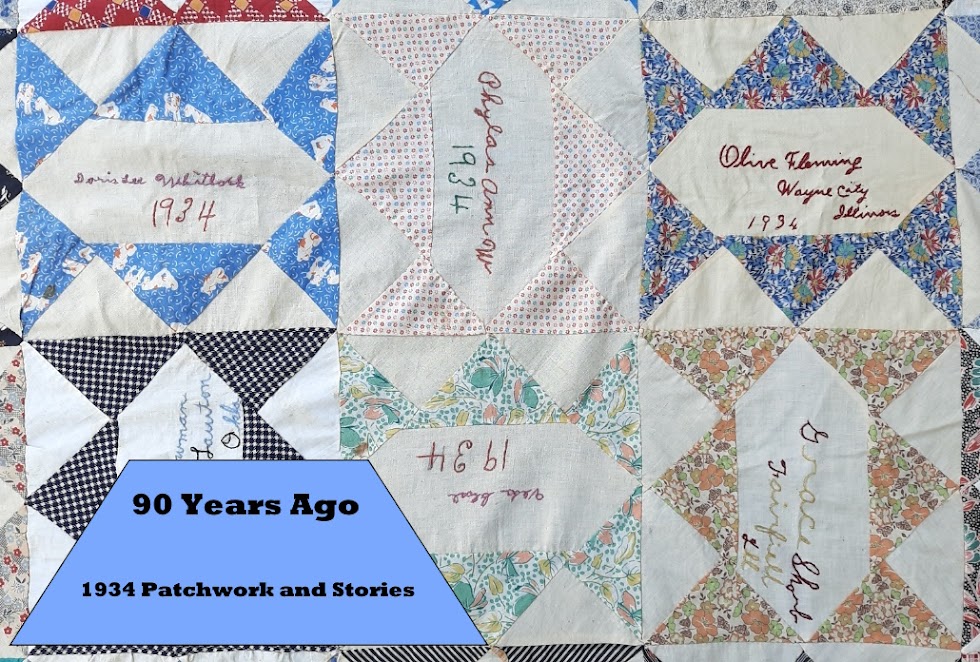While I was away last week I was on the lookout for vintage magazines. I was after women's magazines, preferably with craft and patterns. I managed to find half a dozen from the 1950s and 1960s.
The first one I found was 1955, an Australian magazine called The Australian Woman's Mirror. There were a pile of magazines at the collectibles shop, but this issue had an article on Quilting Bees. That was a bit of a surprise - Australian women weren't making quilts in the 1950s. The article was written by B.L.L., who I don't think had ever attended a quilting bee.
First requirement is a light wooden frame of a size to make a double-bed quilt; smaller quilts may be made just as easily on the larger frame. This is set up like a table on its side, so that several women may work side by side, fastening the ground material in place with drawing-pins (thumb tacks).
Over this the cotton-wool (batting?) is pinned. The patterns are drawn on; the already-sewn patterns go on the the drawn outlines; the quilting is done and the appliqued designs completed. Finally, the edges are bound.
Sorry, B.L.L., but I think a bit more research is needed. I don't know if B.L.L. read about it in a book, or overheard half of a conversation between strangers, but I don't quite see a quilt resulting from the above actions. A quilting frame is more like a table on its legs than on its side. How does one draw the pattern onto the cotton-wool batting, and why would you finish the quilting before the applique is complete? It's a mystery.
Next stop - Woman's Weekly 1971. Part 6 of the Handbook of Homemaking A-Z is Q for Quilts. The quilts are are shop-bought but the description is still interesting.
Many quilts are now filled with man-made fibres, such as Terylene. Synthetic fillings are dust-free and moth-proof, but they tend to have less buoyancy than feathers or down.
Ideally, a quilt should be placed on top of all the other bedclothes. A gentle shake will keep it fluffed up - and a hot water bottle in the bed helps to make it buoyant.That must be a big water bottle - it sounds like the quilt is bobbing around inside, buoyant and free of dust and moths. Terylene is the trademarked Dacron in the USA.
Last week's block of the CCCQ Revisited was Block 3 and this week's is Block 16.
 |
| Block 3 Priscilla Turner |
 |
| Block 16 Adaline Gibson |
Block 3 - Priscilla and Joseph Turner
Photos of Block 3
Block 16 Adaline Gibson
Photos of Block 16



This article made me recall my personal encounter with a mysterious default storage unit. There was pretty much nothing in there except a few boxes of quilts. They look rather classic based on the patterns embroidered on them. We have no clue how much they are truly worth as the unit had been auctioned off.
ReplyDelete